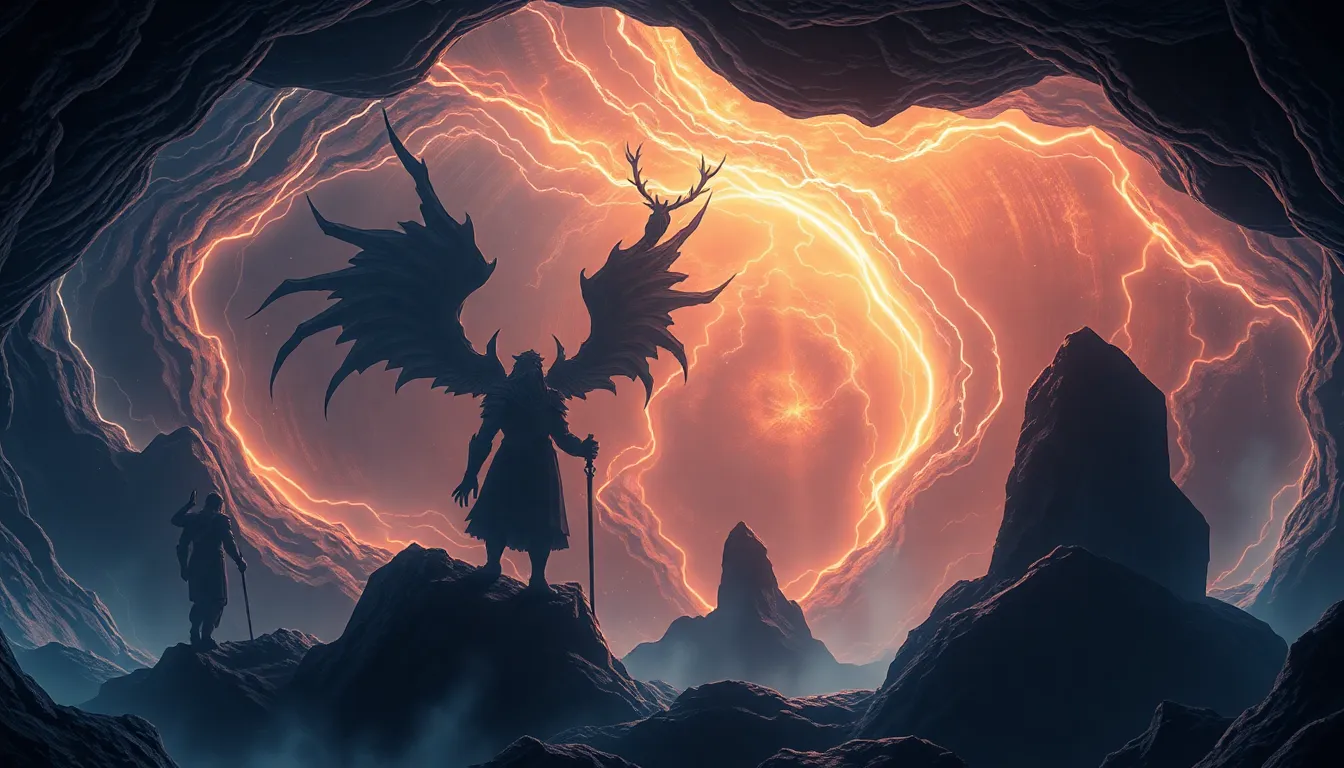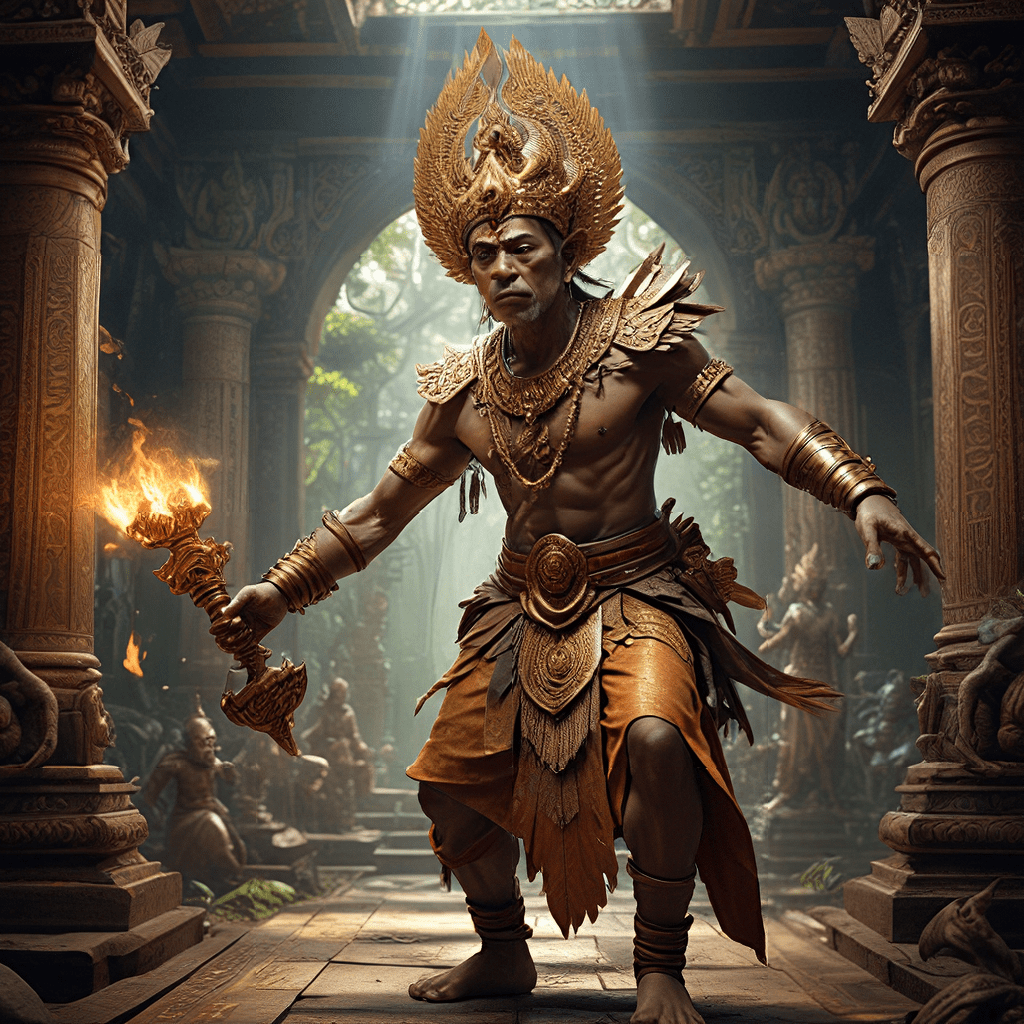Journeying Through the Underworld: Myths That Will Captivate You
I. Introduction to the Underworld in Mythology
The concept of the Underworld is a captivating aspect of mythology across various cultures. Often depicted as a realm beneath the earth’s surface, the Underworld serves as a final destination for souls after death. It holds immense significance, representing not only the end of life but also the mysteries surrounding mortality and the afterlife.
In mythological narratives, the Underworld plays a crucial role in shaping the stories of gods, heroes, and mortals. It often acts as a setting for transformative journeys, where characters confront their fates, encounter the past, and sometimes return with newfound wisdom. Common themes associated with the Underworld include:
- Mortality and the human condition
- The duality of life and death
- Redemption and transformation
- The quest for knowledge and understanding
II. The Greek Underworld: Hades and its Inhabitants
In Greek mythology, the Underworld is predominantly represented by Hades, named after its god. Hades is depicted as a dark and shadowy realm, divided into several regions, including the Elysian Fields for the virtuous and Tartarus for the wicked. Its geography is marked by rivers like the Styx, which souls must cross to enter.
Key figures in the Greek Underworld include:
- Hades: The god of the Underworld, who rules over the dead.
- Persephone: The queen of the Underworld, who spends part of the year above ground with her mother, Demeter.
- Charon: The ferryman who transports souls across the Styx in exchange for an obol.
- Cerberus: The three-headed dog who guards the gates of Hades.
Myths surrounding the descent and return of souls are prevalent. One of the most famous is the story of Orpheus, who ventures into Hades to retrieve his beloved Eurydice, showcasing the power of love and the challenges of the afterlife.
III. The Mesopotamian Underworld: Kur and its Mysteries
In Mesopotamian mythology, the Underworld is known as Kur, a dark and dreary place where all souls go after death. Kur is portrayed as a land of no return, highlighting the inevitability of death in Sumerian and Babylonian culture.
The Epic of Gilgamesh features a significant journey to the Underworld, where Gilgamesh seeks to understand mortality after the death of his friend Enkidu. This epic emphasizes the themes of friendship, the quest for immortality, and the acceptance of human limitations.
Mortality and the afterlife are central themes in Mesopotamian mythology, reflecting the culture’s beliefs about the transient nature of life and the importance of legacy.
IV. The Egyptian Underworld: Duat and the Afterlife Journey
The Egyptian Underworld, known as Duat, is deeply significant in ancient Egyptian beliefs regarding death and resurrection. Duat is often depicted as a complex realm filled with challenges that the soul must navigate to reach the afterlife.
Central to this journey are deities such as:
- Osiris: The god of the afterlife, who judges the souls of the deceased.
- Anubis: The god of mummification and the protector of graves.
The weighing of the heart ceremony is a pivotal myth in which the heart of the deceased is weighed against the feather of Ma’at (truth and justice). A heart lighter than the feather signifies a worthy soul, allowing passage into the afterlife.
Egyptian beliefs about immortality and resurrection emphasize the importance of living a virtuous life to secure a favorable judgment in the afterlife.
V. The Norse Hel: A Different Perspective on Death
In Norse mythology, the Underworld is represented by Hel, ruled by the goddess Hel, the daughter of Loki. Hel is depicted as a cold and gloomy place, where those who did not die gloriously in battle go after death.
Key figures in Norse views of the Underworld include:
- Hel: The ruler of the realm of the dead.
- Loki: The trickster god, whose actions often lead to chaos.
Unlike the Greek and Egyptian Underworlds, Norse mythology also includes the concept of Valhalla, where warriors who died bravely are welcomed into Odin’s hall. This juxtaposition highlights different cultural attitudes towards death, honor, and fate.
The role of fate and destiny is significant in Norse beliefs, with the idea that one’s death is predetermined by the Norns, who weave the tapestry of fate.
VI. The Underworld in Indigenous Mythologies
Indigenous mythologies often present unique perspectives on the Underworld. In Native American folklore, for instance, the Underworld is sometimes seen as a place of transformation and renewal. Different tribes have their own interpretations and stories, but common themes emerge.
In Aboriginal Australian mythology, the journey of the soul after death is a significant aspect of belief systems, often involving returning to the Dreamtime, a sacred era of creation. This journey is characterized by:
- Transformation into ancestors
- Connection to the land and nature
These narratives emphasize interconnectedness, renewal, and the cyclical nature of existence.
VII. The Underworld in Eastern Mythologies
Eastern mythologies also present intriguing concepts of the Underworld. In Japanese mythology, Yomi is the land of the dead, where souls go after death. It is depicted as a dark and shadowy realm, and the journey to Yomi involves significant trials.
In Hinduism, Naraka is the equivalent of hell, representing a place where souls are judged and may face punishment for their earthly deeds. This belief system reflects the ideas of karma, where actions in life influence the soul’s fate in the afterlife.
Buddhist concepts of the Underworld include Naraka, a place of suffering for those who have committed negative deeds. However, the emphasis is on rebirth and the possibility of attaining enlightenment through various paths.
VIII. Modern Interpretations and Adaptations of Underworld Myths
Ancient underworld myths have profoundly influenced contemporary literature and film. Stories of journeys to the Underworld resonate with modern audiences, reflecting timeless themes of love, loss, and redemption.
One notable case study is Dante’s Inferno, which presents a vivid depiction of the afterlife and the consequences of sin. This work has inspired countless adaptations, from literature to cinema, illustrating the enduring power of these myths.
Modern interpretations often explore the psychological dimensions of the Underworld, examining the inner struggles of characters as they confront their fears and desires. This evolution showcases the adaptability of ancient myths, allowing them to remain relevant and captivating across generations.




